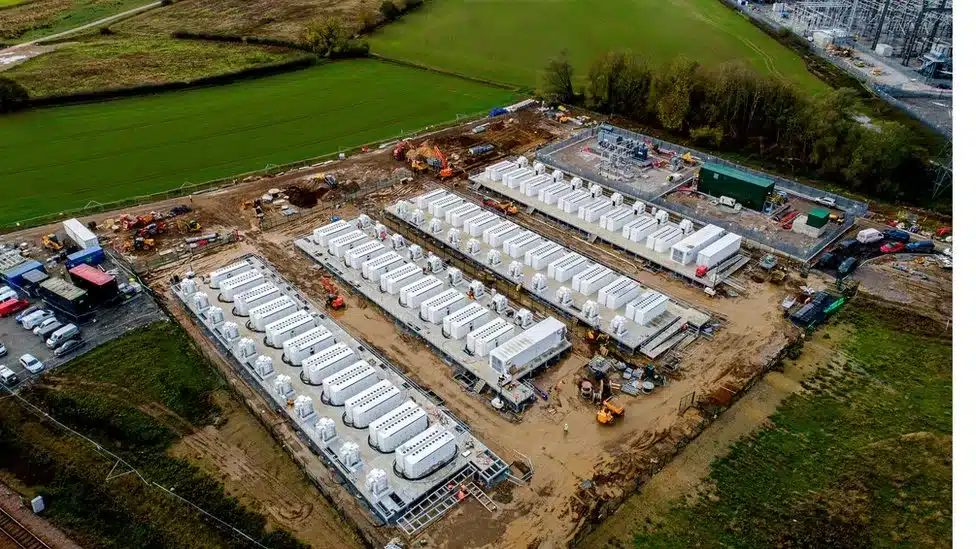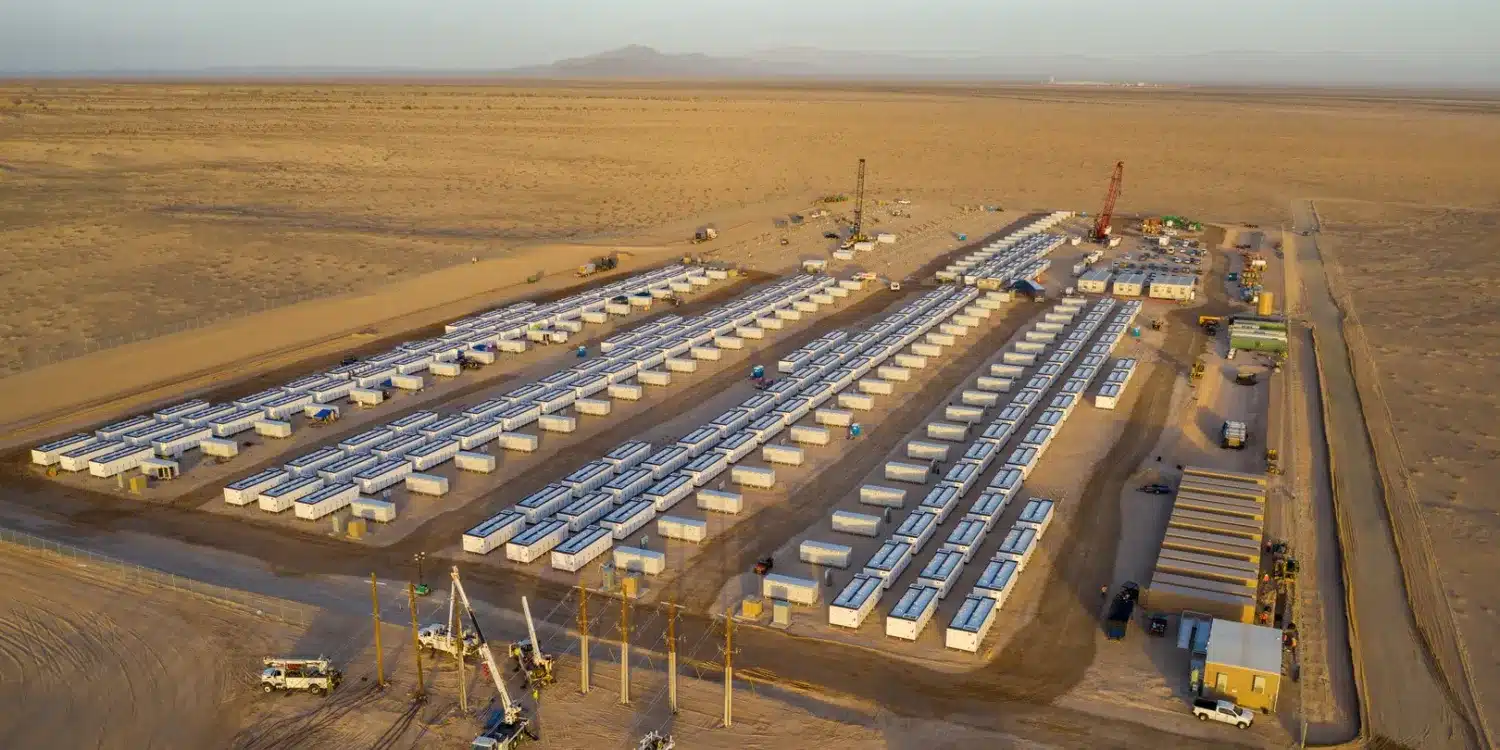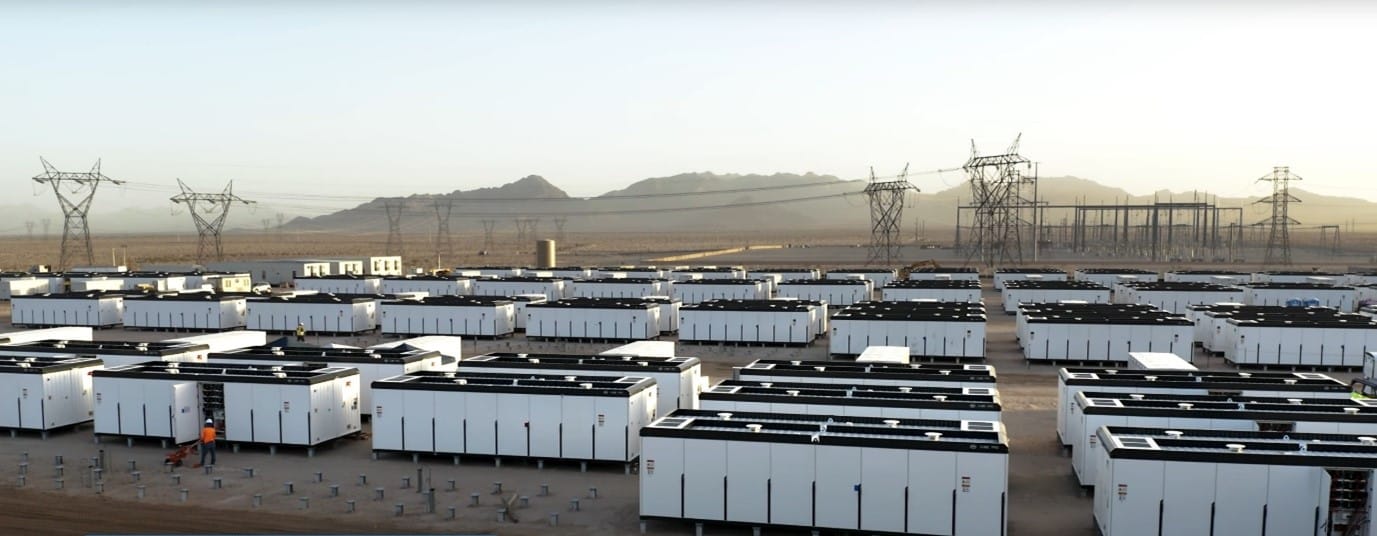A regular cry from solar and wind energy sceptics is the familiar “what happens when the sun doesn’t shine, or the wind doesn’t blow?” Storing surplus energy for those renewable down times (and they do come) has been an enduring question for the sector.
Ordinary batteries, even advanced lithium-ion ones, are not easy to scale to the size needed to handle a city’s worth of backup. They also – ironically, considering their purpose – come with their own recycling issues. They are more complicated to take apart than old lead-acid cells; when broken down the products are not easy to reuse; and cobalt mining, important for battery stabilisation, comes at an environmental price.
Nonetheless, in a considerable achievement, the world’s largest single-phase battery went live in the Californian desert at the end of last year. Crimson Storage is a 350 MW/1400 MWhr system. Its multiple stacks of cells cover around 2,000 acres and can deliver electricity to 47,000 homes across the year (in the single-phase supply commonly required by residential users). It was the first standalone energy storage project approved by the Biden administration, demonstrating the USA’s interest in this direction.
Around the same time, Europe’s largest battery storage system also went online in the UK’s East Yorkshire, able to hoard enough energy to keep 300,000 homes going for two hours (around 200MWhrs of electricity per cycle).

However, traditional battery solutions are not the only options. What else?

It’s coarse, and rough, and gets everywhere
How about sand? Finnish technicians converted 100 tonnes of sand into an ‘electricity silo’ at the Vatajankoski power plant, using it to store heat, which is then converted back into hot air when needed, warming the water supply of local homes. It was officially inaugurated by the Finnish Minister of Economic Affairs in January after a year and a half of successful testing and operation. It performed “even better than we expected” according to Markku Ylönen, Technical Director of Polar Night Energy who are behind the project and developing the technology into a range of solutions. Sand holds its temperature, and in the right circumstances the battery (sandery?) can stay at 500C or more for several months. Next step is an upgraded version 20 times larger with 2000 tons of sand.
Drop the volt
Or what about gravity? Pumped hydro – ushering water uphill then reclaiming its momentum later – is already a ubiquitous storage method, though operates at scales hard to localise. Using electric motors to raise a heavy weight, then gradually releasing it to drive electric generators, is a more adaptable method of harnessing the Earth’s obliging pull.
Scottish-based Gravitricity is one company developing the technology, and is convinced of its scalability and durability, citing a far longer operating life than ordinary batteries. And there’s certainly no shortage of old mining shafts with a handy drop that could be pressed into a satisfyingly green new use.

Number crunching
And some ideas take the concept into entirely different fields. In 2022, a paper published in ACM Energy Informatics Review proposed the idea of an ‘information battery’. When electricity is in surplus, it’s used to carry out the more predictable computations required in massive and energy-hungry data centres, so the stored results are already done and waiting when supplies are lower. (Many of the calculations required for search engines, YouTube, and other popular online tools, can actually be easy to foretell.)
Barath Raghavan, Assistant Professor in Computer Science at USC Viterbi School of Engineering, and an author of the paper, summed up the proposal – and perhaps the entire energy storage question – in one crisp sentence: “In the civilization-scale challenge of sustainability, we need every tool we can get.”

One more thing…
If the industry is looking for a battery that will run for years, and years, and years, what’s the cell it needs to beat?
That would be the Oxford Electric Bell, otherwise known as the Clarendon Dry Pile. Electrostatic force swings a clapper between two bells, and has been doing so since 1840. The tiny amount of charge required means the batteries discharge incredibly slowly, and no one knows how long they will eventually last. It’s estimated to have ‘rung’ more than 10 billion times, and boasts the Guinness World Record for the world most durable battery. You can find it near the Clarendon Laboratory of UK’s Oxford University, still ringing (very quietly).




